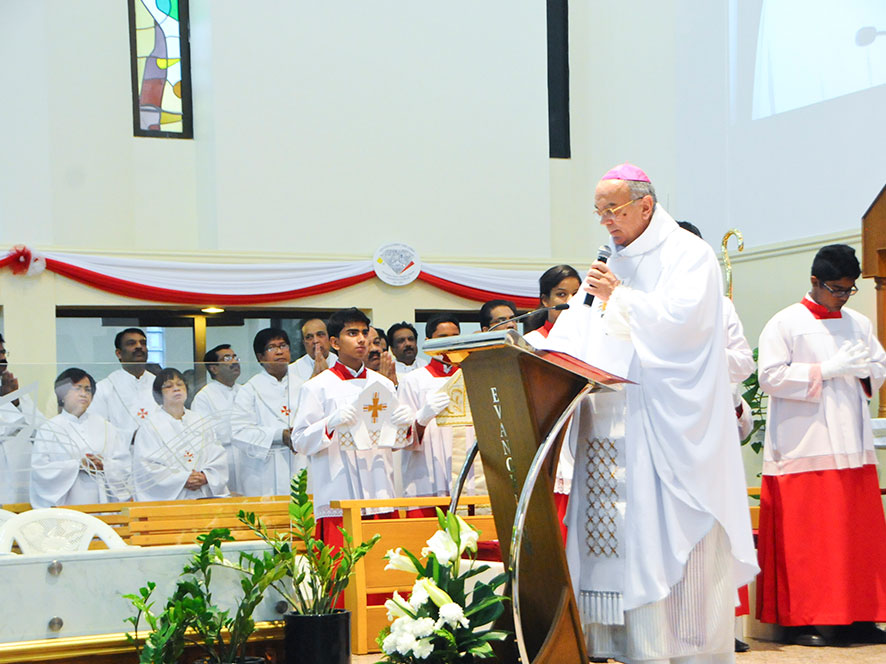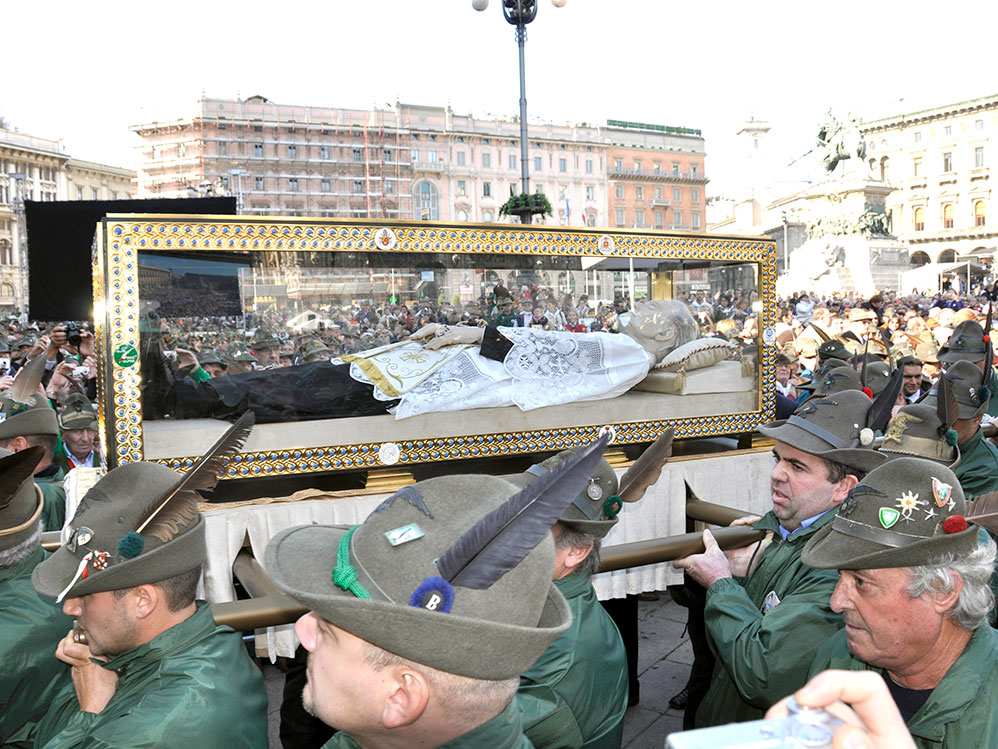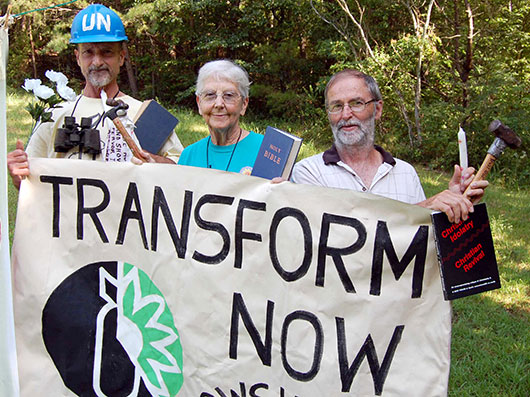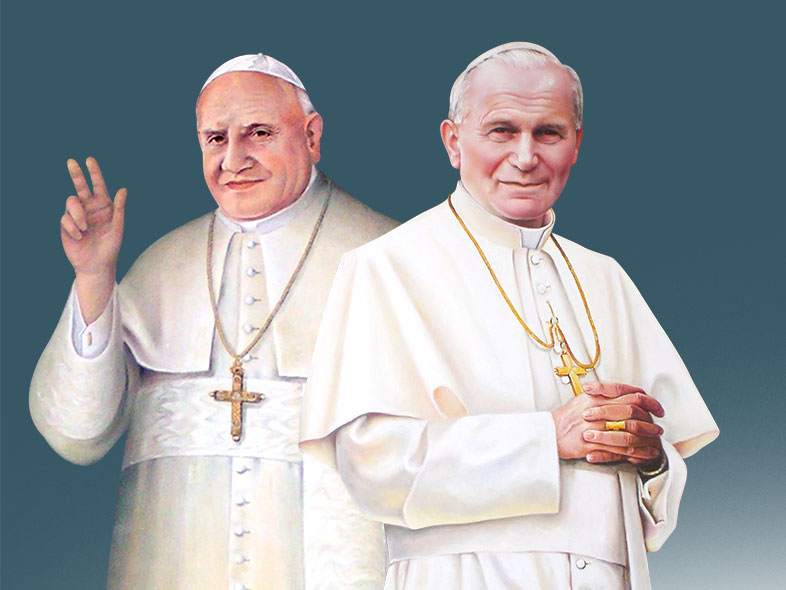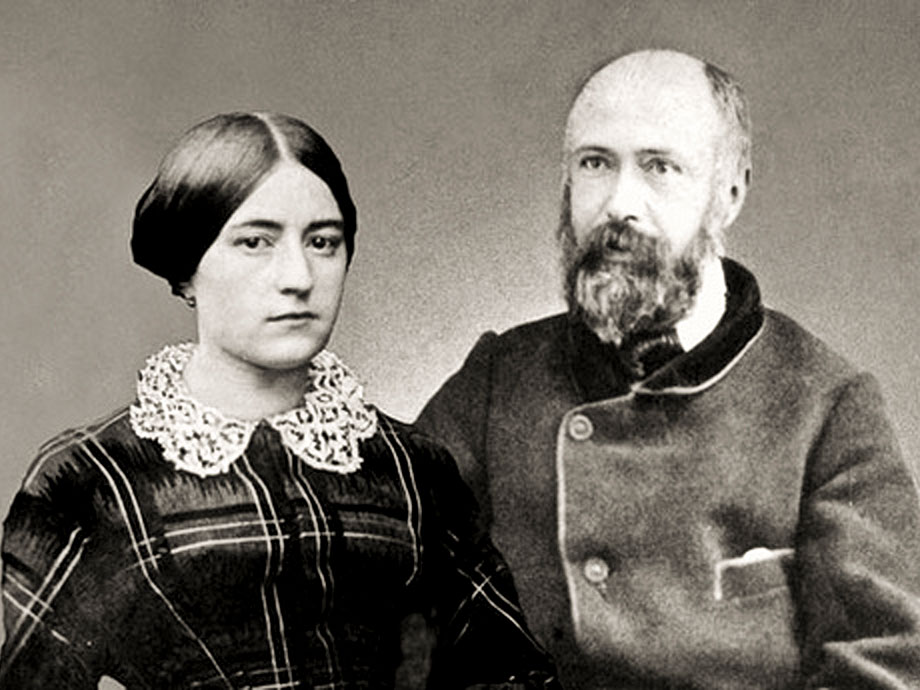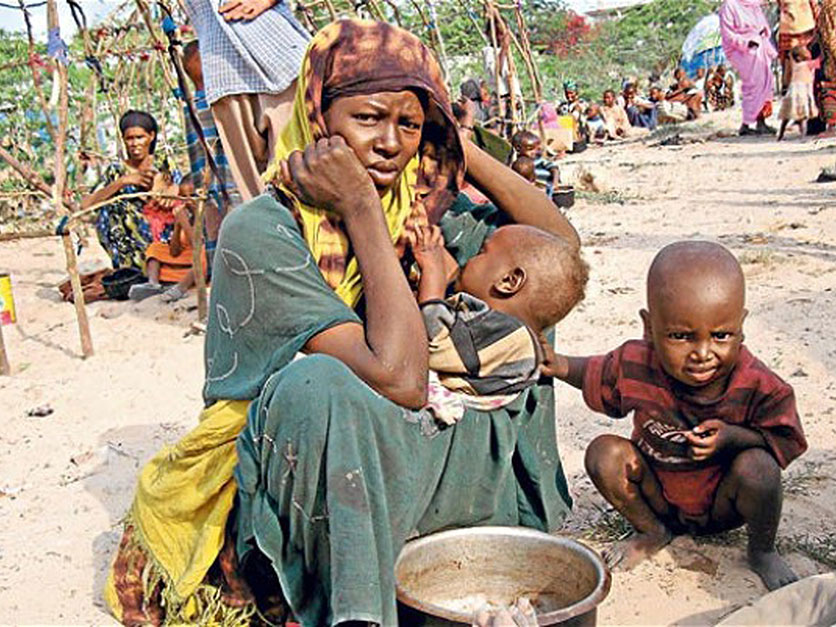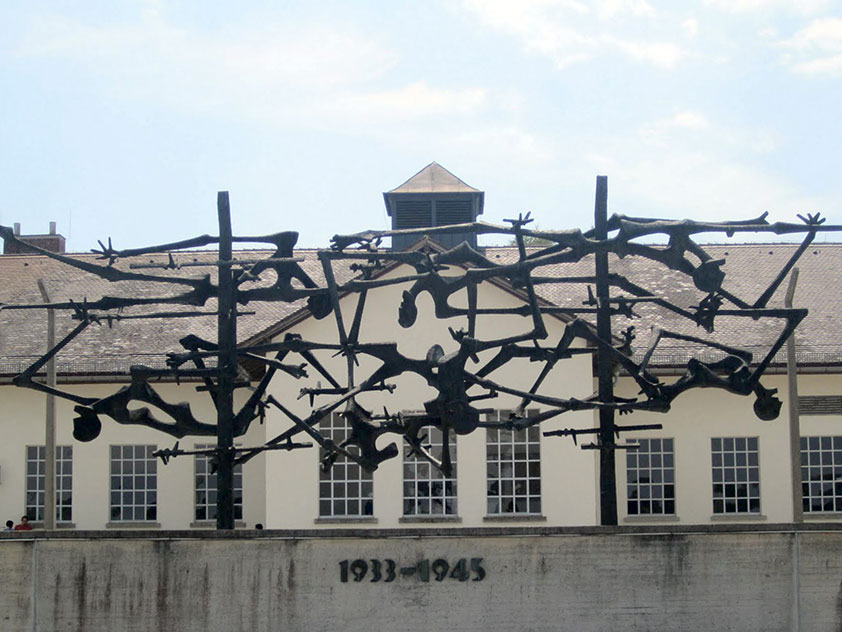On December 6, 2012, an unusual circumstance brought together religious and academic authorities in Angeles City, Philippines: the 100th anniversary of the birth of one of its most illustrious citizens, Architect José Maria V. Zaragoza. The Most Rev. Socrates B. Villegas, D.D., Archbishop of Lingayen-Dagupan, presided over the Mass marking the opening ceremony of the occasion.
The Mass was held at the university chapel of the Holy Angel University and was followed by the unveiling of the 40-foot Saint Lorenzo Ruiz beatification mural which Zaragoza designed and which the Zaragoza family donated to the Holy Angel University for repair and safekeeping. (The mural was part of the background for the pontifical altar at Rizal Park in Manila, where Pope Saint John Paul II, in February 1981, celebrated Mass and beatified Lorenzo Ruiz, the first Filipino saint. It was the first beatification rite held outside Rome.)
As part of the celebration of Zaragoza’s centennial, the Center for Kapampangan Studies also held a program-exhibit on the works of the Guagua-born architect at the same university. The family of the late architect graced the events with their presence.
BIRTH AND CAREER
José Maria Velez Zaragoza was born on December 6, 1912 to a Kapampangan mother, Rosario Velez of Guagua, and a Spanish father, Elias Zaragoza y Rojas, who descended from the same Cepeda clan of Spain to which St. Teresa of Avila belonged.
Zaragoza took up B.S. Architecture at the Pontifical and Royal University of Santo Tomas and graduated in 1936. Two years later, he placed seventh in the licensure examination and became the country’s 82nd licensed architect. Later, he got a diploma in liturgical art and architecture from the International Institute of Liturgical Art in Rome. He also obtained a diploma in comprehensive planning from the Hilversun Technical Research Center in The Netherlands.
Zaragoza’s career spanned more than half a century and yielded a significant body of architectural works that addressed the spiritual and secular requirements of the modern Filipino. Jose Maria V. Zaragoza belonged to the third generation of Filipino architects, a category ascribed to those educated in local universities prior to the outbreak of World War II. He and his contemporaries advocated the progressive ideas of modernism in rebuilding the Philippines from the ashes of war in the mid-20th century and, in the process, developed an architectural identity befitting a newly-independent nation-state.
The extraordinary coherence of Zaragoza’s works is based on a solid intellectual framework grounded in modern aesthetics and coupled with nationalist fervor. His professional training was rigorous, allowing him to experiment and generate a new set of building principles that have become indispensable to the understanding and practice of modern architecture in a tropical milieu and in the post-colonial and social context.
In his lifetime, Zaragoza pioneered a path that revealed both his spiritual and professional calling of designing landmark worship spaces, spiritual centers, as well as some of the nation’s iconic edifices of commerce and culture. Zaragoza’s name is eminently synonymous with modern ecclesiastical architecture. He completed not less than 35 churches in the Philippines and abroad. Zaragoza’s architecture for congregational worship is daring and sculptural. It creates an atmosphere that solicits spiritual reflection, fortifying one’s faith in God.
He also excelled in secular works, crafting 273 residences, 36 office buildings, 3 hotels, 15 airport terminal offices, 5 public buildings, and countless housing projects – all demonstrating his versatility as a designer and his mastery of the modern architectural vocabulary. These made him one of the great masters of 20th century Philippine architecture, in the service of God and humanity.
Zaragoza’s famous landmarks include the Meralco Building, the Santo Domingo Church, Our Lady of the Miraculous Medal National Shrine, St. John Bosco Church, Villa San Miguel (the official residence of the Archbishop of Manila), and the renovated Quiapo Church.
He also designed the Pontificio Collegio Filippino in Rome and helped the Vatican do appraisals on damaged and destroyed buildings after World War II. Recognizing his contributions to the Catholic Church, Pope John Paul II conferred on Zaragoza the title Gentiluomo di Sua Santità (Lay Member of the Papal Household) in 1992. Men who receive such title serve as lay attendants of the Pope in Vatican City. Zaragoza died at 81 in 1994.
SACRED MASTERPIECES
Without doubt, Zaragoza’s most famous religious building is the Santo Domingo Church and Convent which he designed for the Dominicans, his mentors at the University of Santo Tomas. The design married old and new since it followed the plan of the church-tower-convento complex of the colonial period. While the building embodies the simplicity of modern design, such features as arches give it a traditional touch. The Santo Domingo Church is the biggest in Metro Manila and one of the biggest churches in Asia.
The massive church is a unique blend of Spanish colonial and modern architecture. On October 4, 2012, during the traditional enthronement of Nuestra Senora del Santissimo Rosario de La Naval de Manila, the Philippine government officially proclaimed the Santo Domingo Church as a National Cultural Treasure. The declaration recognized both the towering edifice and the exquisite ivory image of La Naval with the Infant Jesus as cultural treasures of the nation.
On March 4, 1978, Cardinal Jaime Sin, Archbishop of Manila, inaugurated the newly-built Saint John Bosco Parish Church. Also known as the Don Bosco Church, the modernistic sacred building is now one of the most famous landmarks of Makati’s central business district. Its distinctive concave facade features a cross, seemingly riding the crest of a magnificent wave. In the hallowed expanse beneath the wave, thousands of weddings, baptisms and other sacred events have been celebrated for the past 36 years, with the iconic starburst tabernacle upon golden anahaw leaf as dramatic backdrop.
Widening ripples above the altar evoke the graces streaming from the Blessed Sacrament and flowing into the vaulted ceiling – a stylized net for the “fishers of men” – arched over the parish community at worship. Behind the main church is the small Blessed Sacrament Chapel whose tabernacle, mounted on a flame-like structure, shares the same receptacle for the Blessed Sacrament with the main church. Intimate weddings, weekly parish baptisms and wakes for distinguished parishioners are held in this chapel.
Zaragoza’s daughter, Loudette, writes: “Daddy said he wanted to give the illusion of a tent. The molded cement ceiling was designed to carry the simulated folds of a tent. He said that, to build community and to worship, the Israelites gathered around the fire which represents Yahweh’s presence. I thought it was a great idea, people intimately gathered in a tent around the flame of God’s loving presence.”
Loudette said that the personal favorite among her father’s works is the Miraculous Medal National Shrine. The church is known for its palm ceiling and fiery-shaped altar. This church was also patterned after a tent, the worship place in Moses’ time. The fiery-shaped altar, where people used to dance, represented God. She concluded: “My father’s works are very symbolic because they came from a faith that was very profound.”
The works of José Maria V. Zaragoza, regarded as the “builder of churches,” seem to echo what the Bible says about what God’s temples and churches should be like: “How lovely is your dwelling place, Lord, God of hosts. My soul is longing and yearning for the courts of the Lord. The sparrow herself finds a home and the swallow, a nest for her brood; she lays her young by Your altar, Lord of host, my King and my God. They are happy who dwell in Your house, forever singing Your praise. One day within Your courts is better than a thousand elsewhere. The threshold of the house of God I prefer to all the other dwellings” (Psalm 84).
THE MERALCO BUILDING
His most famous office building is the Meralco Building, considered by many as the most beautiful building in Ortigas Center. The late architect and architecture historian, Benedictine Father Rodrigo Perez III, said that the 15-story Meralco Building “is slightly curved to give it more stability and to avoid the boxlike appearance of rectangular buildings and the ‘train effect’ of straight corridors. Tapering vertical sunbreakers enhance the gentle curve of the concave façade.” Biographer Ruben David Defeo wrote that Zaragoza, in designing the building, made use of the louver as a significant feature of the structure. Zaragoza is believed to have been inspired in designing the building by the fender of the fashionable car during his time, the Cougar.
The facade of the Lopez Building, named after the owner, alternates solids and transparencies. The sides are solid, like two monolithic towers. Inside are four sections: the pedestrian level, the main structure, an additional level and a crown with a flat roof. The first-class Lighthouse Restaurant at the top floor reflects the owner’s “abiding love for good food.” Moreover, it includes the impressive Meralco Theater.
A bridge which connects the offices, corridors, and the elevator lobby supports both portions of the building. Zaragoza likened these to “two people supporting each other, with the bridge serving as outstretched arms.”
When Zaragoza designed and built the Lopez Building, he was at the height of his architectural career. He was ably assisted by his wife, Pilar Rosello, in most of his architectural projects. Together, wrote Defeo, they were the “tandem to beat, Zaragoza doing the structural aspects of the building, and his wife, the interiors made of wood, including the carpentry and furniture.” She designed the Theater’s wooden paneling that lines the walls of the auditorium.
Up to the present, “no other building in the country has duplicated his feat of having a series of vertical blades in concrete, arranged in a concave manner, not only to shield the building from sunlight and even rainwater, but to breathe subtlety and supremacy of form into the structure.” Its structural strength was seen when it remained undamaged during the July 16, 1990 earthquake.
ROOTED IN GOD’S LOVE
Zaragoza found fulfillment and welcomed the challenge to do complex structures. He put together not just building materials but people’s talents and worked towards consolidation and synthesis. He was bold and daring when he mastered a particular style in architecture to go and explore new lines and curves. Her daughter writes: “Dad conceived magnificent things for others but, for himself, he was content with his reliable white Volkswagen Beetle. He drove my younger sister and me in this simple but sturdy vehicle to school every day, sans air-conditioning, along the not so congested EDSA in the late ‘60s till the early ‘70’s.”
“Even if my Dad enjoyed music immensely, the only rhythm, cadence and melody in the car were the Hail Marys we prayed during our 30- to 40-minute drive from our home in Quezon City to our school in Makati. After the rosary, we used to recite almost chant-like a prayer for every bead of the rosary in Spanish: “Sagrado Corazon de Jesus en vos confio” (“O Most Sacred Heart of Jesus, I place my trust in Thee”). He set the mood, the focus and the purpose of our day. He even told us about the life of the saint of the day, which greatly inspired my younger sister and me.”
“My father saw his talent as a gift from God. His life was so deeply rooted in his love for God and his devotion to Mama Mary. That I am confident, with the help of those who believe in the preservation of cultural treasures, Dad’s work and memory will live longer than a hundred years.
“I saw him as a very prayerful man and I feel that his creativity sprung from his daily Mass and his devotion to our Blessed Mother. He soared in his humanity because he was rooted in his deep love for God and the propagation of His Kingdom, thus contributing works not only of historical importance, but also for God’s greater glory.”











